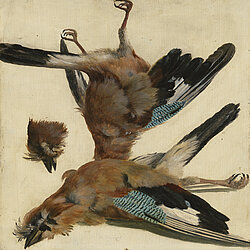Loading the page ...
Horace Vernet
1789–1863, Paris
Horace Vernet came from a prominent family of artists – his father was the painter, Carle Vernet, and his grandfather the famous landscape and marine painter, Joseph Vernet – and he soon demonstrated his precocious talent. Vernet was taught by his father and then apprenticed to Jean Michel Moreau and François André Vincent. As a young man he was an ardent Bonapartist and took part in 1814 in the defence of Paris under Marshal Moncey, an event he commemorated in his famous picture of 1820 La Barrière de Clichy (Musée du Louvre, Paris). The same year Horace went on his first journey to Italy with his father. In 1826 he was appointed a teacher of history painting at the Académie des Beaux-Arts in Paris; from 1829 to 1835 he served as director of the Académie de France in Rome, where he was succeeded by Ingres in 1835. Vernet produced an extensive corpus of paintings. He became famous primarily for his monumental military and battle scenes, although he also produced portraits and oriental genre scenes as well as small cabinet paintings and lithographs. A busy and famous artist, he travelled extensively throughout Europe and the Orient. The culmination of his artistic career was his admission to the Légion d’Honneur in 1842.
Archive
